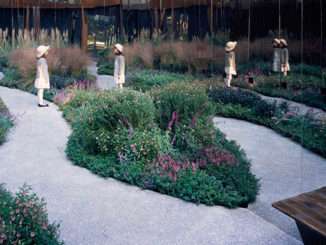During the financial crisis, I raised the possibility of a shortage of landscape architects and now a decade later there is anecdotal evidence that there is now a shortage of landscape architects in the UK, Australia and other countries. We are seeing the same jobs cycling through jobs boards and design firms seeking landscape architects through social media campaigns and also enticing possible employees through showing their workplace and activities through posts and stories. There has also been a boom in landscape architecture jobs in developing countries however, there are not enough programs in developing countries to fulfil demand with programs in various countries seeing an increase in international students. Firms are also starting to hire non-landscape architects to undertake tasks such as project management, drafting, modelling to free up landscape architects to design, manage and implement landscapes, but this is a short-term solution.
Landscape architects are taking the lead and there is also a growing trend in the revitalisation cities and also projects addressing climate change issues which has, in turn, increased the demand for landscape architects. How do we solve the long-term shortage of landscape architects?
Campaigns
Recently, the Landscape Institute and ASLA have started campaigns to bridge the shortage gap. The Landscape Institute has created the #chooselandscape campaign to raise the awareness of the landscape profession amongst key groups including high schoolers, current university students and those looking for a career change. They have launched a new website, social media campaigns and youtube videos to entice people to choose landscape as a career whether that be a landscape architect, landscape managers, landscape scientists or other associate landscape streams.
ASLA has also recently joined with Careers Building Communities, a collaboration with 28 real estate industry organizations to allow people to discover landscape architecture as a satisfying career choice. The campaign includes a website provides a brief overview of the profession as well as links to ASLA’s career discovery website, virtual reality (VR) video of Klyde Warren Park in Dallas and Your Land magazine, a special print supplement introducing the profession of landscape architecture to students from grade school through high school.
Creating campaigns is key to increasing the number of landscape architects. By raising awareness at allied professions and young people allows for more people to find out about landscape architecture and the possible career options. Professional organisations and educational institutions should continue creating these campaigns and also information programs that allow people to gain a greater understanding of the landscape architecture industry.
More support from Professional Organisations
Many landscape architects left the industry during the financial crisis as they couldn’t obtain work or see a way to stay in the industry. During financial downturns, professional organisations need to provide greater support and guidance to their members so that there is not an exodus of highly qualified and trained landscape architects who leave the industry thus leaving a gap in various levels as is now being found 5-10 years later.
Open Days and Weeks
Schools and Universities often have open days which sometimes involve professionals. This type of event could be used by firms and professional organisations to participate in Open Days that are held by cities. Design Firms landscape, architecture, engineering, etc) can also go one step further and collaborate together to have open days in cities or areas to let more people learn about landscape architecture and other careers.
Attending and Presenting at non-landscape conferences
Every day there are conferences held around the world by Architects, Engineers, Designers and many other professions. It is key for landscape architects to attend and present at these conferences to enable people to greater understand the landscape architecture profession.
Advocate for changes in immigration policy
Over the last few years, various nations have made it harder to employ overseas graduates whether they have trained overseas or in the country in which they have been trained. We have seen an increase in the number of overseas students in landscape architecture programs, however, many return home due to immigration laws requiring firms to prove that there are no local skilled people and after extended periods of advertising and then allowed to apply for skilled visas. Universities and Professional organisations are spending time and funds training and registering landscape architects only to see them return home.
Creating new programs and streams
There are possibilities for creating new programs and streams
- Teaching a reduced program (shorter in years) endorsed by the profession to allow people to specialise in certain areas of landscape architecture.
- Creating more dedicated transition streams or conversion courses for who are currently completing or have completed courses in Engineering, Architecture, etc.
- Creating apprenticeships or traineeships to train graduates to become landscape architecture technicians or similar positions.
Increasing the number of accredited programs
There are universities and education institutions across the world who are adding landscape architecture programs to their faculties and departments, however, some of these programs are not accredited or recognised. It may be in the interest of universities and professional organisations with accredited programs to engage in collaborations (locally and internationally) to assist these new programs in reviewing their program and creating accredited programs with joint exchanges between universities. This is especially true in developing countries where the demand for programs often exceeds the current programs thus students are heading overseas.
The above suggestions (with some already existing in some countries) seek to engage the profession in a discussion about how to solve the shortage. The shortage will continue and may abate if there is another economic downturn but when the economies come back the industry will face the same issues. There is a need to address this issue and I hope that we can provide answers.
Article Written by Damian Holmes is the Founder and Editor of WLA.
He is also a registered Landscape Architect and has extensive experience as a landscape architect in Australia, Canada, and China.
Cover Image Credit | Flickr User – Bo (“call me Daniel”) Gao




